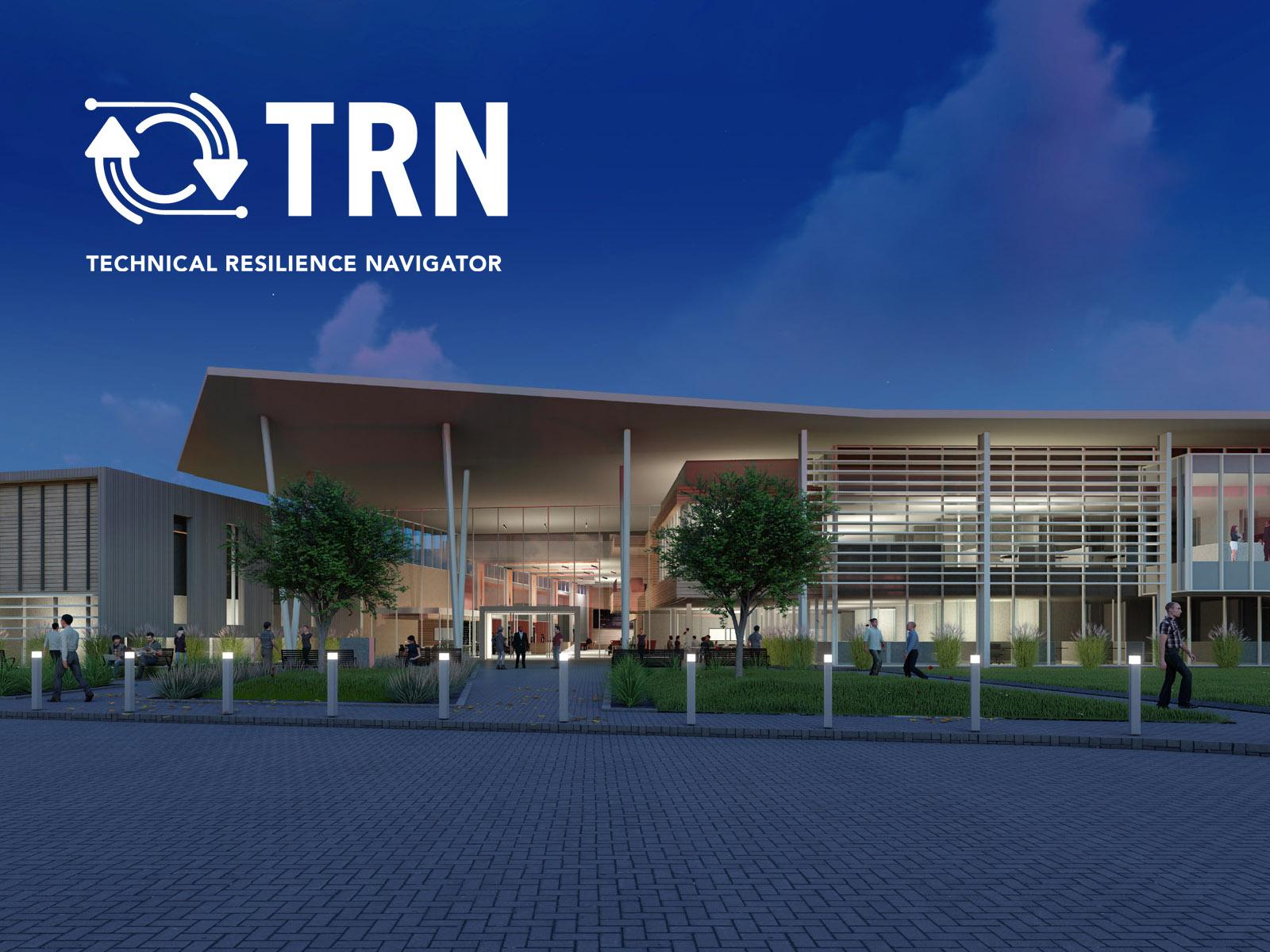Resilience Planning Tool Now Calculates Emissions Impact
A new feature of the Technical Resilience Navigator calculates energy-related carbon emission reduction

A new version of the Department of Energy’s Technical Resilience Navigator (TRN) allows users to evaluate different solutions based on both risk reduction and emissions impact to prioritize those that help deliver the most benefits toward both goals.
(Composite image by Shannon Colson | Pacific Northwest National Laboratory)
Identifying solutions that can help enhance a site’s resilience and reduce emissions can be difficult, but a new version of the Department of Energy’s Technical Resilience Navigator (TRN) allows users to evaluate different solutions based on both risk reduction and emissions impact to prioritize those that help deliver the most benefits toward both goals.
The TRN is a web-based resilience planning tool co-developed by Pacific Northwest National Laboratory (PNNL) in partnership with the National Renewable Energy Laboratory (NREL) for the Federal Energy Management Program (FEMP). The TRN helps users identify and manage risks to critical mission operations from disruptions in energy and water services.
“Organizations often have multiple objectives, with some competing, and some at least partially aligned with each other,” said Doug Elliott, one of the PNNL researchers who developed the methodology behind the new feature. “Adding the ability to quantify the impact on site emissions from a resilience solution in the TRN enables sites to better understand to what degree their potential resilience improvements would also provide climate change mitigation. The same strategies that can help shore up a building against an extreme climate event or other resilience concerns can also help them reduce their carbon footprint.”
And prioritizing emissions reduction is not only a good thing to do, but also a necessity. In 2021, President Biden signed Executive Order 14057 which establishes ambitious decarbonization goals, including achieving net-zero carbon emissions across its portfolio of federal buildings by 2045.
This new feature makes it easier for federal facility managers and building owners to choose and deploy resilience solutions with the highest potential for risk mitigation and emissions reduction.
The easy-to-use tool walks users through a series of six interactive modules. In the Solution Prioritization module, the user can assess the emissions impact of each resilience solution to display a side-by-side comparison of how much CO2 emissions could be avoided by implementing each solution, to produce an emissions reduction rating of either major, significant, marginal, or none.
This emissions impact is then evaluated alongside risk reduction potential and other user-defined decision criteria within the Solution Prioritization actions “Review Priorities and Cost” and “Prioritize Solutions.”
“The resilience planning and risk assessment portion really focuses on helping people identify risk drivers to the building’s critical loads,” says Hannah Rabinowitz, another PNNL researcher involved with this effort, “but there are other really important decision-making criteria that sites have to consider when they are choosing to invest significant amounts of money in updating their energy systems, and they need to make sure that those investments are helping them meet all their key goals, including decarbonization.”
Users feed the tool high-level information on the site’s energy usage, such as how much electricity or natural gas the site uses on an annual basis. The tool also pulls data from the Environmental Protection Agency’s Emissions & Generation Resource Integrated Database (eGRID) which profiles the fuel mix of sources used to generate electricity in a particular region.
To learn more about the TRN and this new capability, interested users are invited to attend an in-person FEMP pre-event workshop “The Intersection of Decarbonization and Resilience” on Monday, October 24th at 10:15 a.m. ET in Cincinnati, Ohio. To find out more about the FEMP pre-event workshops at Energy Exchange 2022, visit https://www.energy.gov/eere/femp/energy-exchange-2022-pre-event-workshops. Additional content will also be presented in the full technical program at Energy Exchange.
Published: October 19, 2022